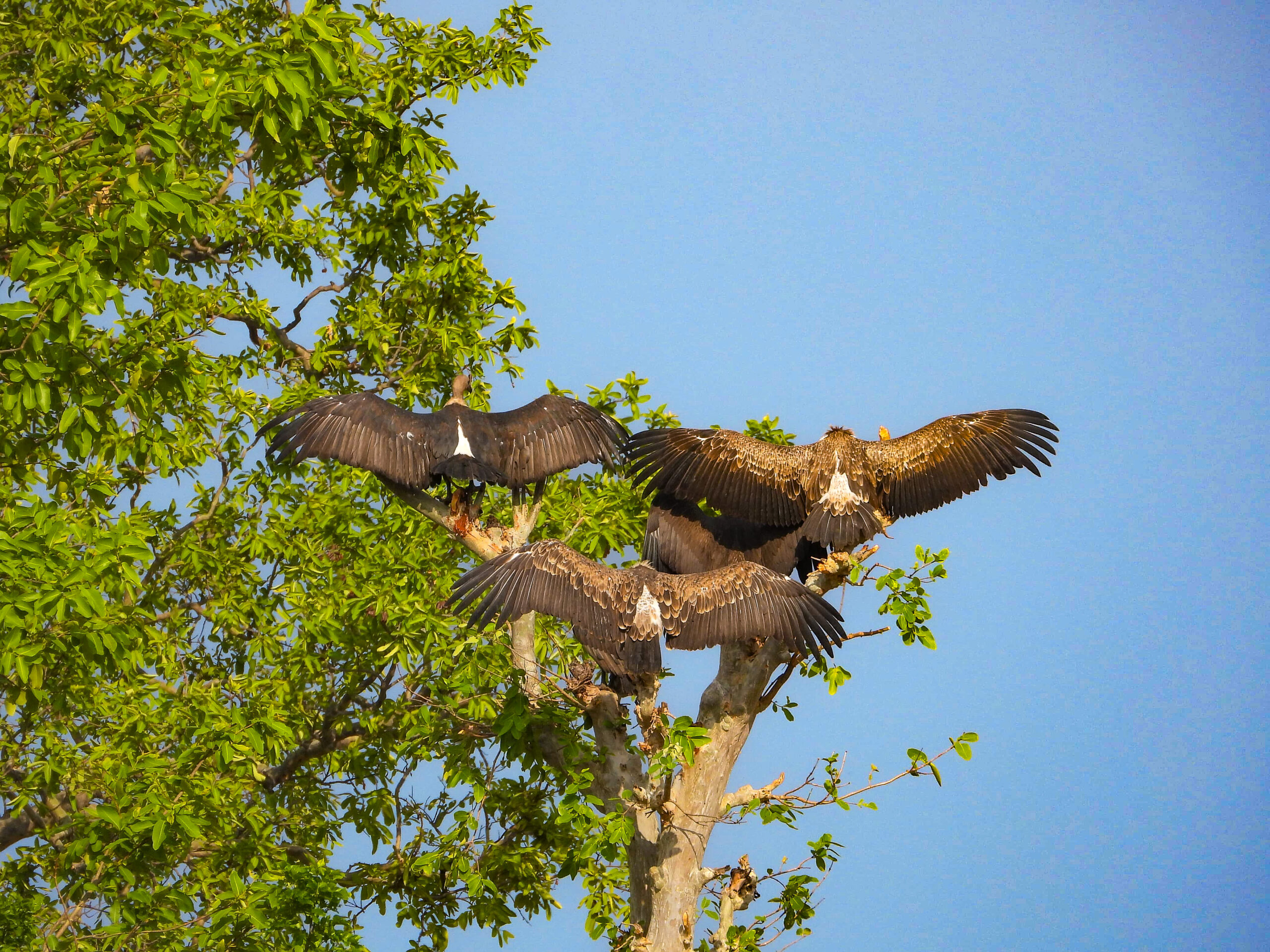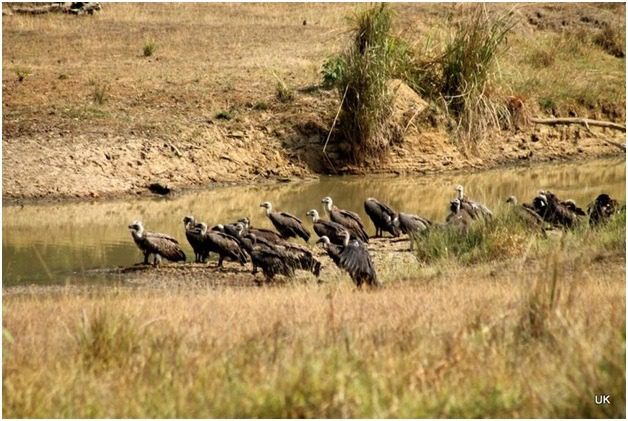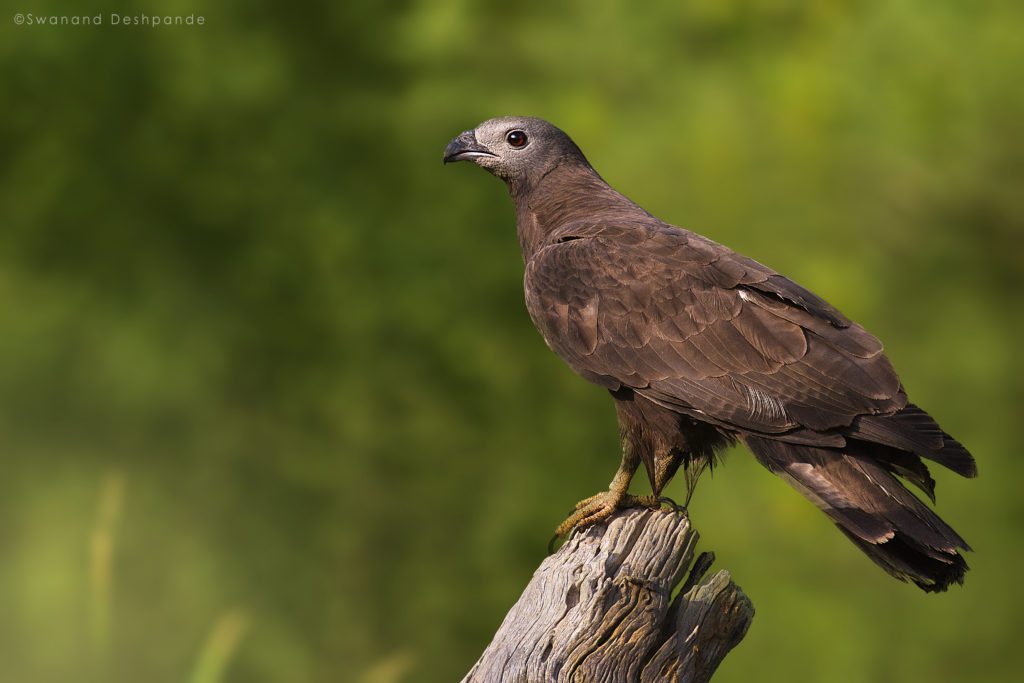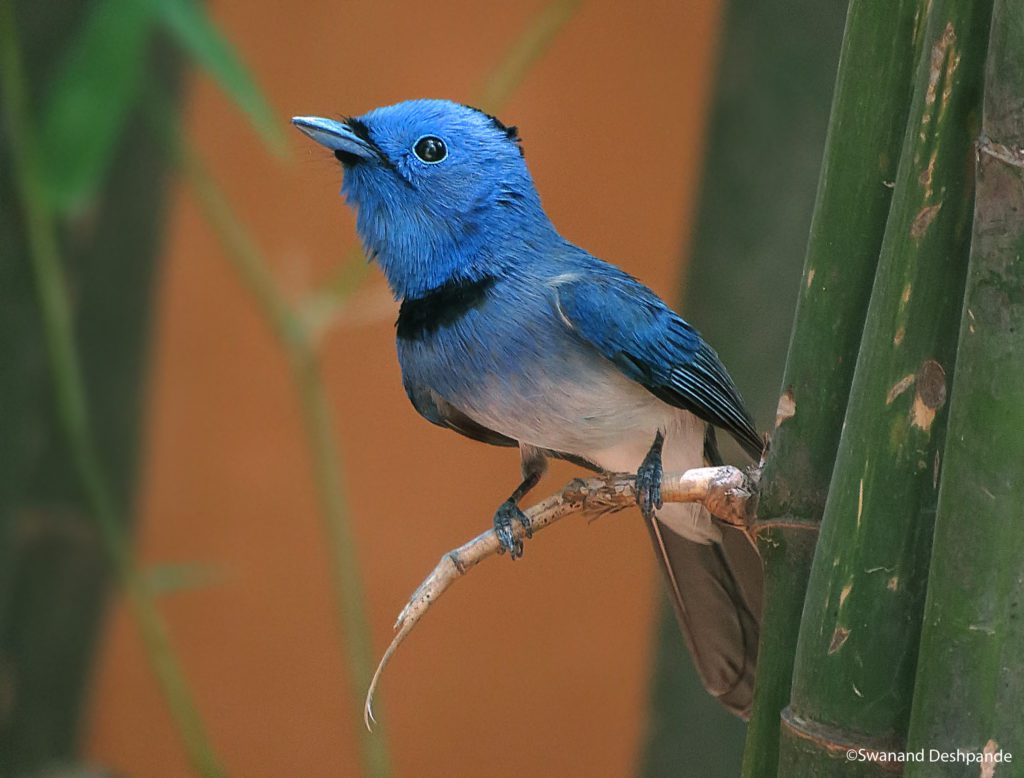Vultures of India: Guardians of the skies
Vultures of India are nature’s cleanup crew, soaring high in the sky, looking for dead animals to feed on. With their strong beaks and special adaptations, they help keep our environment clean by eating carcasses that could spread dangerous diseases like anthrax and tuberculosis.
In India, we have nine species of vultures, but sadly, many of them are now endangered due to problems like habitat loss and poisoning from a drug called diclofenac, which is used on cattle. Vultures play a crucial role in keeping nature in balance by preventing the spread of diseases from dead animals. This blog will introduce you to the vultures of India, their important role in nature, and why we need to protect them.
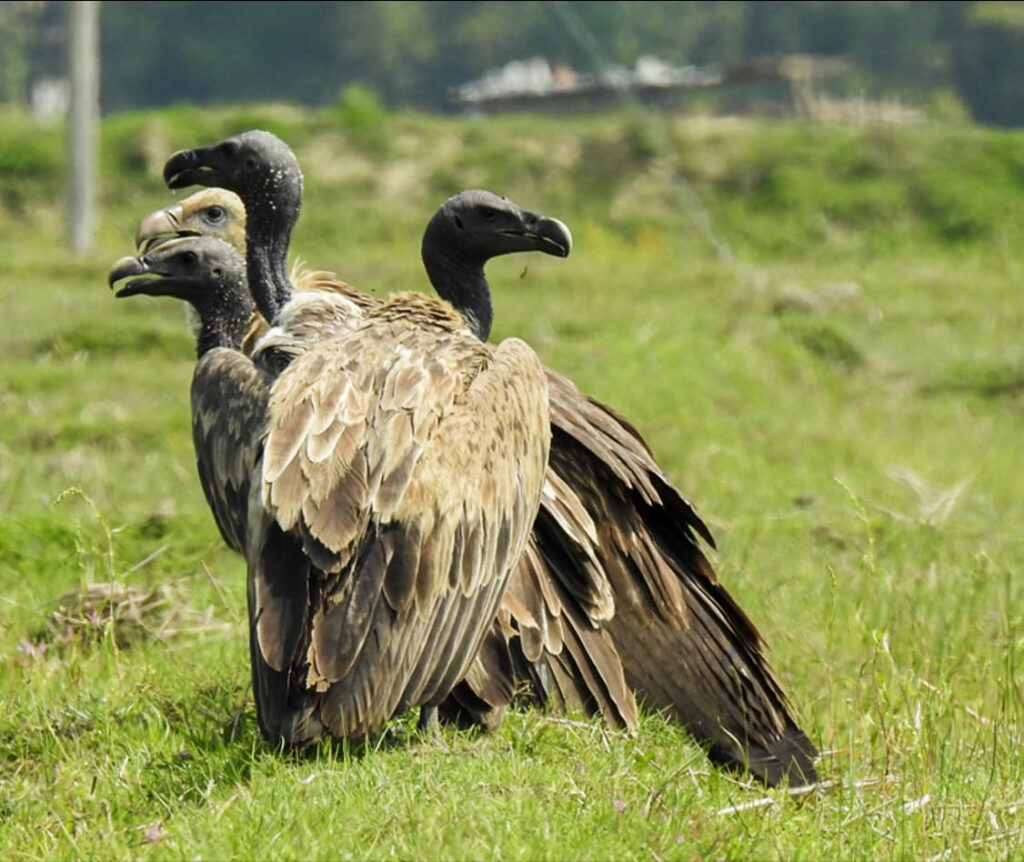
With beaks like hooks and feathers bold,
Its story, ancient, has been told.
A scavenger of skies so high,
It circles ‘neath the sun’s bright eye.
Among nature’s most proficient scavengers are vultures, which are huge to medium-sized birds of prey. They mostly eat the carcasses of domesticated animals and wild animals. In contrast to other predatory birds, vultures feed on carrion or carcasses rather than hunting.
They eat a lot of carcasses, which otherwise could have had a negative impact on people and the ecosystem because an unattended carcass can act as a haven for many pathogens and a source of diseases like brucellosis, anthrax, and tuberculosis in livestock. Because they are scavengers, vultures have a special place in the ecology and are at the top of many food chains. They also support the preservation of the ecosystem’s ecological equilibrium.
Vultures are divided into two primary groups based on their evolutionary history and geographical distribution: Old World vultures and New World vultures, each group has unique characteristics and adaptations suited to their environments.
Old World vultures: Africa, Asia, and Europe are home to Old World vultures, or Accipitridae family vultures. They share physical characteristics with members of the same family, including a more robust body and a bald head to reduce bacterial burden.
New world Vultures: New World vultures have a distinct strategy for scavenging because of their extremely acidic stomachs, which aid in the breakdown of bacteria-filled carrion, they also frequently have feathered heads.
Also Read: Parakeet Species in India
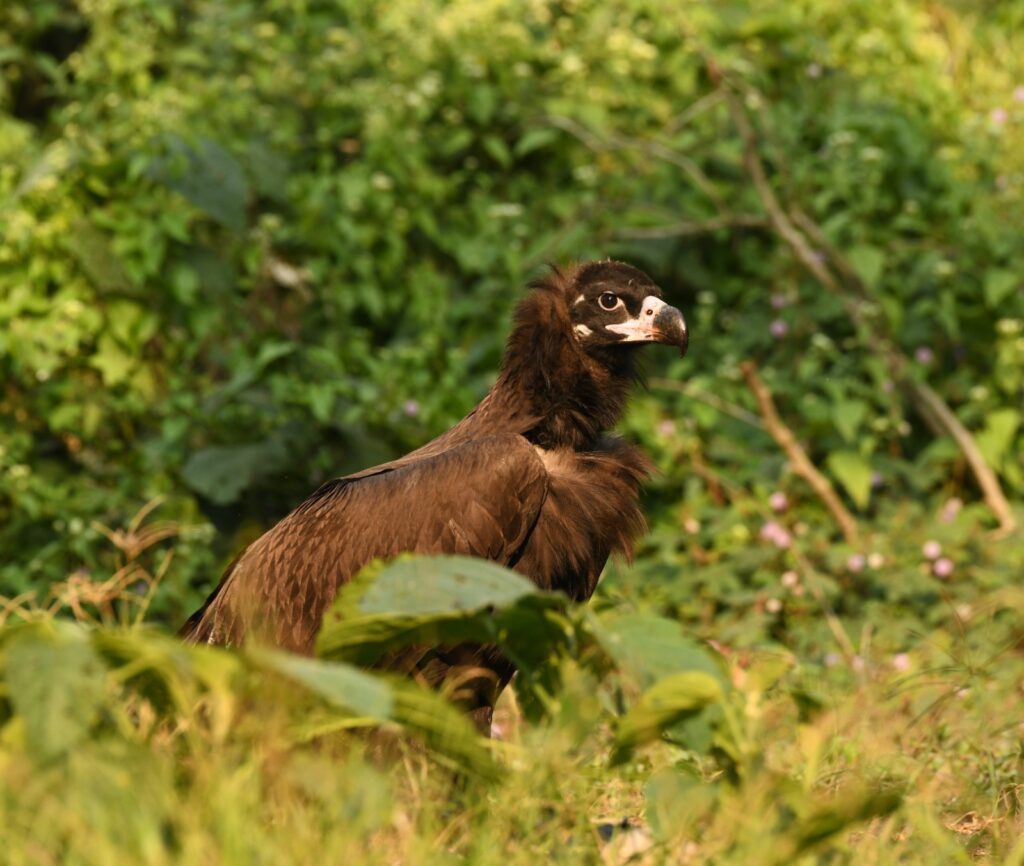
There are 23 species of vultures found across the globe, out of which, 16 species are old world species and the rest 7 species belong to the new world species, out of 23 species India has 9 species of vultures among which 2 species are migratory and the rest 7 species are resident to India.
Table: 1- Vulture species of India
| Species | IUCN status | Size | Wingspan | Distribution |
| Indian Vulture (Gyps Indica) | Critically endangered | 78-93 cm | 190-220 cm | Found in India, Pakistan and Nepal |
| White rumped vulture (Gyps bengalensis) | Critically endangered | 70-85 cm | 180-200 cm | Mainly in India and parts of Bangladesh, Pakistan ans Nepal |
| Slender billed vulture (Gyps tenuirostris) | Critically endangered | 75-85 cm | 190-210 cm | Limited to parts of India and Pakistan |
| Himalayan vulture (Gyps himalayensis) | Near threatened | 85-95 cm | 220-270 cm | Found in the Himalayan region of India, Nepal, Bhutan, and Tibet |
| Bearded vulture (Gypaetus barbatus) | Near threatened | 80-90 cm | 195-580 cm | Found in parts of northern parts of India, Including the Himalayas |
| Egyptian vulture (Neophron percnopterus) | Endangered | 55-65 cm | 150-165 cm | Found in parts of northern and western parts of India |
| Griffon vulture (Gyps fulvus) | Least concerned | 80-100cm | 220-250 cm | Found in parts of northern and western parts of India |
| Cinereous vulture (Aegypius monachus) | Near threatened | 90-105 cm | 250-290 cm | Occasionally found in northern regions of India |
| Red headed vulture (Sacrogyps calvus) | Critically endangered | 70-80 cm | 180-200 cm | Found in parts of India and southern Asia |
Note:
· Size (Body Length): Length from head to tail (cm).
· Wingspan: Wingtip-to-wingtip distance (cm).
· IUCN Status: Conservation status by IUCN.
· Species: Common name of the vulture.
Also Read: Hornbills in India
What is the Feeding Behaviour of a Vulture? What do they eat?
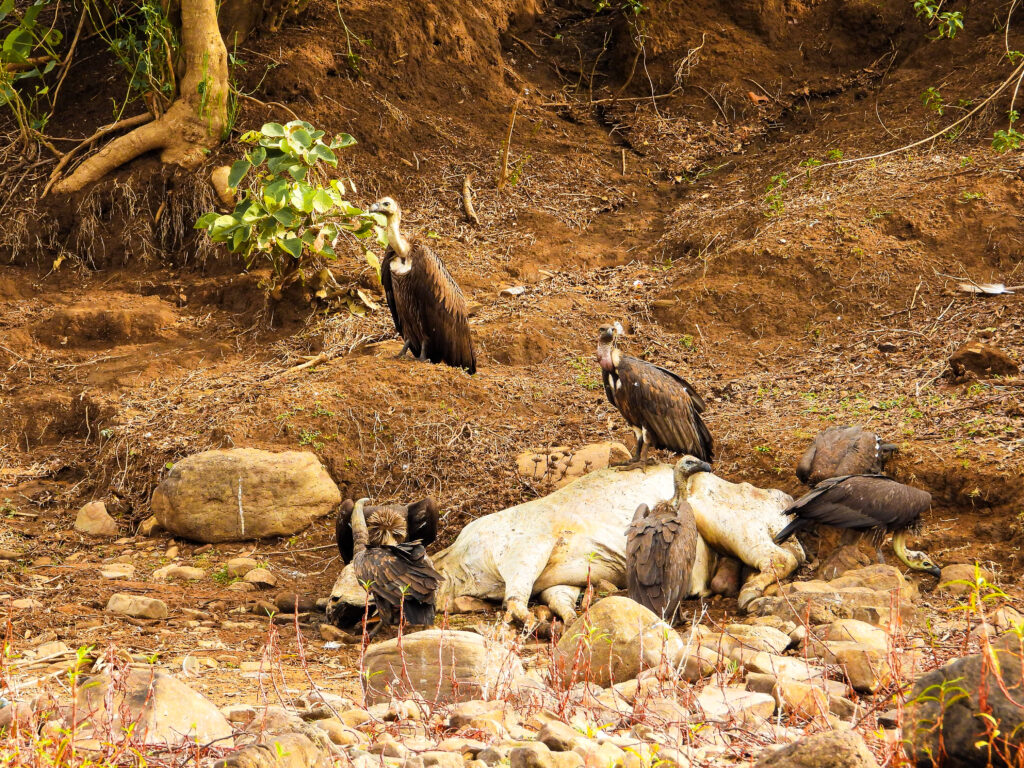
Carrion, or the remnants of deceased animals, is the principal food source for vultures. Large dead animals like cattle, buffaloes, and deer are usually part of their diet, but when accessible, they will also eat smaller mammals, birds, and reptiles.
Their excellent vision enables them to identify possible food sources even from a vast distance. Also, these vultures can stay in the air for extended periods of time. These qualities make these vultures skilled at finding carrion. Vultures rip into meat with their powerful, hooked beaks. They have the capacity to eat a lot of food in one sitting, which will keep them full for several days. Their digestive tract is designed to break down decomposing meat and bones.
Stomach Acidity: Vultures have highly acidic stomachs (pH 1-2) that help digest decaying meat and bones. This acidity also neutralizes harmful bacteria and pathogens present in the carrion.
Enzymatic Breakdown: Their digestive enzymes are specialized to break down tough materials, allowing vultures to process parts of carrion that other scavengers might avoid.
Special Dietary Adaptations of Vultures
For eating bones, the Bearded Vulture has developed a special adaption. It mostly consumes bone marrow and bones. It lowers bones from heights to shatter them open in order to reach the marrow. The Bearded Vulture is distinguished from other vulture species by this highly specialized behaviour.
The food of the Egyptian Vulture is more diversified than that of many other vultures. It consumes fruits, insects, and tiny reptiles in addition to carrion. Because of its adaptable diet, it may survive in a variety of conditions and even during periods when carrion may be in short supply.
How Many Vultures are Left in India?
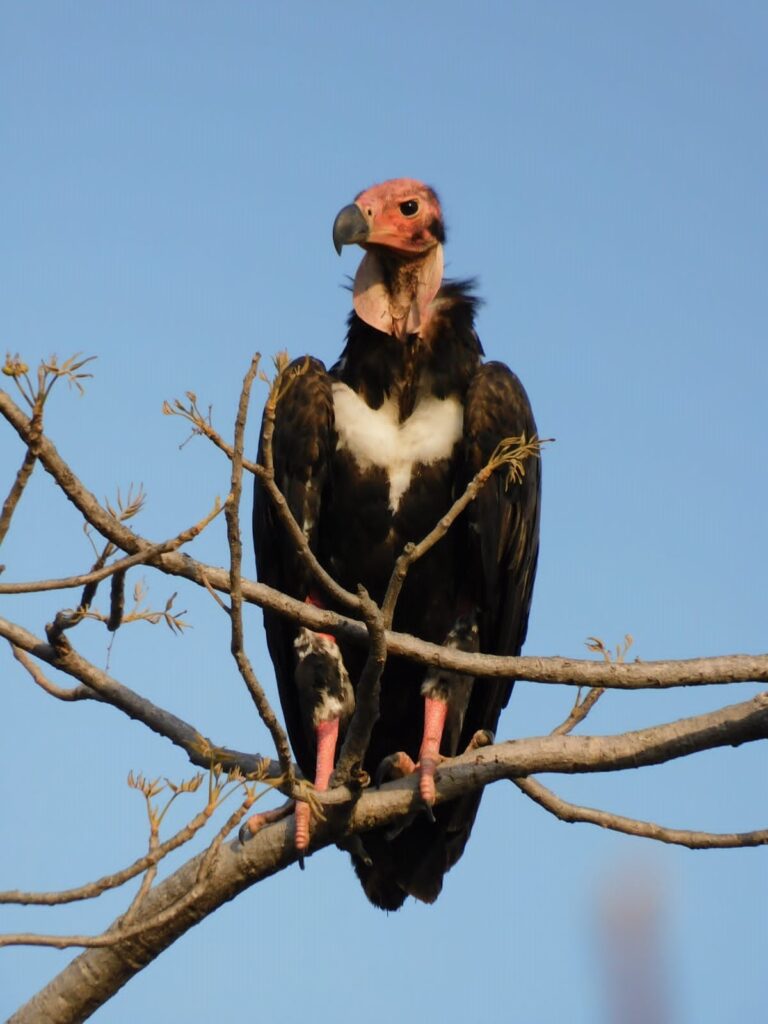
Over the past few decades, vulture populations in India have declined dramatically, mostly as a result of the veterinary drug diclofenac, which is toxic to vultures. Between the 1990s and early 2000s, vulture populations in India fell by more than 95%, putting several species at risk of extinction.
Also Read: Top Birds in Satpura
Table 2: An Estimated Population of the Species Given
| Species | Total number of individuals | Stability of population |
| White-rumped Vulture | 6000 | ↓ |
| Indian Vulture | 12000 | → |
| Slender-billed Vulture | 1000 | ↓ |
| Red-headed Vulture | 2000 | ↓ |
| Himalayan Griffon | 20000 | ↑ |
| Egyptian Vulture | 7000 | → |
| Cinereous Vulture | 200 | ↓ |
| Bearded vulture | 300 | ↓ |
What are the Main Reasons for the Declination of Vulture Species?
Vultures are more prone to toxicity exposure and poisoning due to their ecological makeup. Since they are obligate scavengers, eating corpses raises their chance of coming into contact with pollutants. Additionally, because of their high trophic level and lengthy lifespans, they are more vulnerable to poisons building up in their bodies.
1. Toxins: Intentional and inadvertent poisoning is one of the biggest hazards to vultures. When vultures consume corpses coated with poisons or insecticides meant for other animals, they might get poisoned in some areas. In veterinary medicine, diclofenac, a non-steroidal anti-inflammatory medication (NSAID), is frequently used to treat animals. When vultures devour the carcasses of animals that have received diclofenac, it can result in fatal renal failure. As a result, vulture species have seen sharp population decreases, especially in South Asia.
2. Loss of Habitat: As a result of deforestation, urbanization, and agricultural growth, vultures have fewer places to nest and eat, leading to habitat fragmentation and loss. Reduced survival and reproductive rates may result from this.
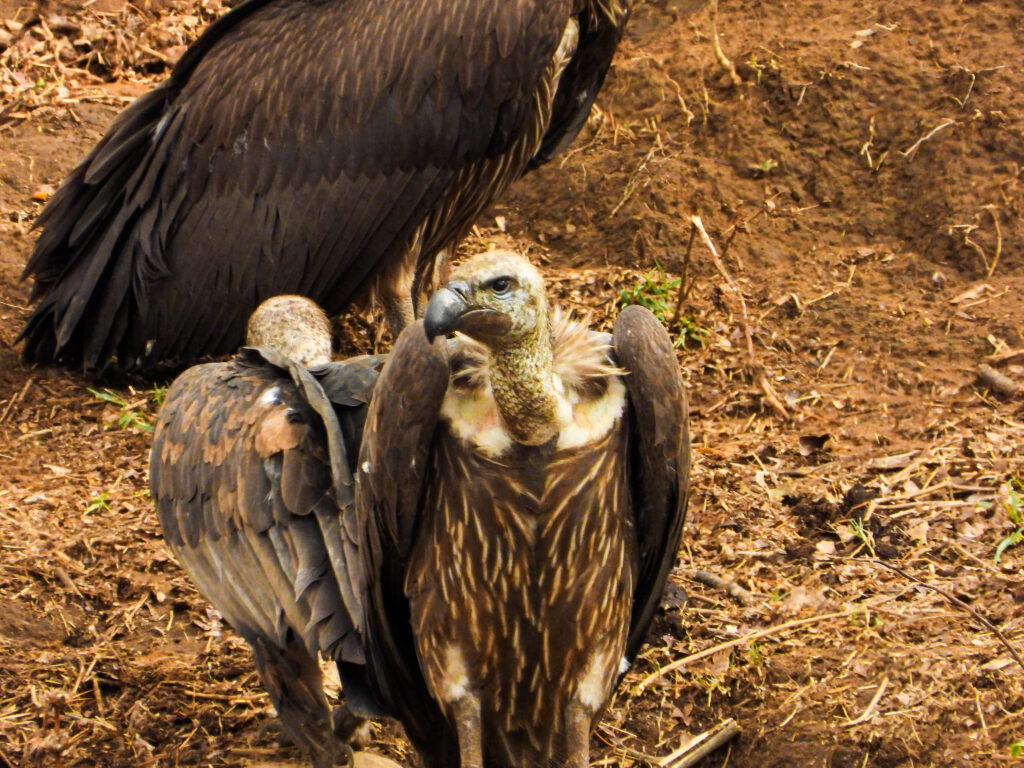
3. Human and wildlife conflict: There are instances when vultures and human activities, such raising cattle, clash. In many regions, vultures face persecution due to the erroneous belief that they endanger cattle, which results in their intentional death.
4. Disease: When vultures are already under stress from various sources, they are more vulnerable to illnesses that have the potential to wipe out whole populations. Vultures’ health can be impacted by illnesses like botulism and avian influenza.
5. Human Disturbance: Human activities that disturb vulture nesting locations and feeding regions, such as logging, tourism, and agriculture, can lower the success of vulture breeding and forage efficiency.
Also Read: Star birds of Satpura
What are the Common Myths/ Misconceptions About Vultures?
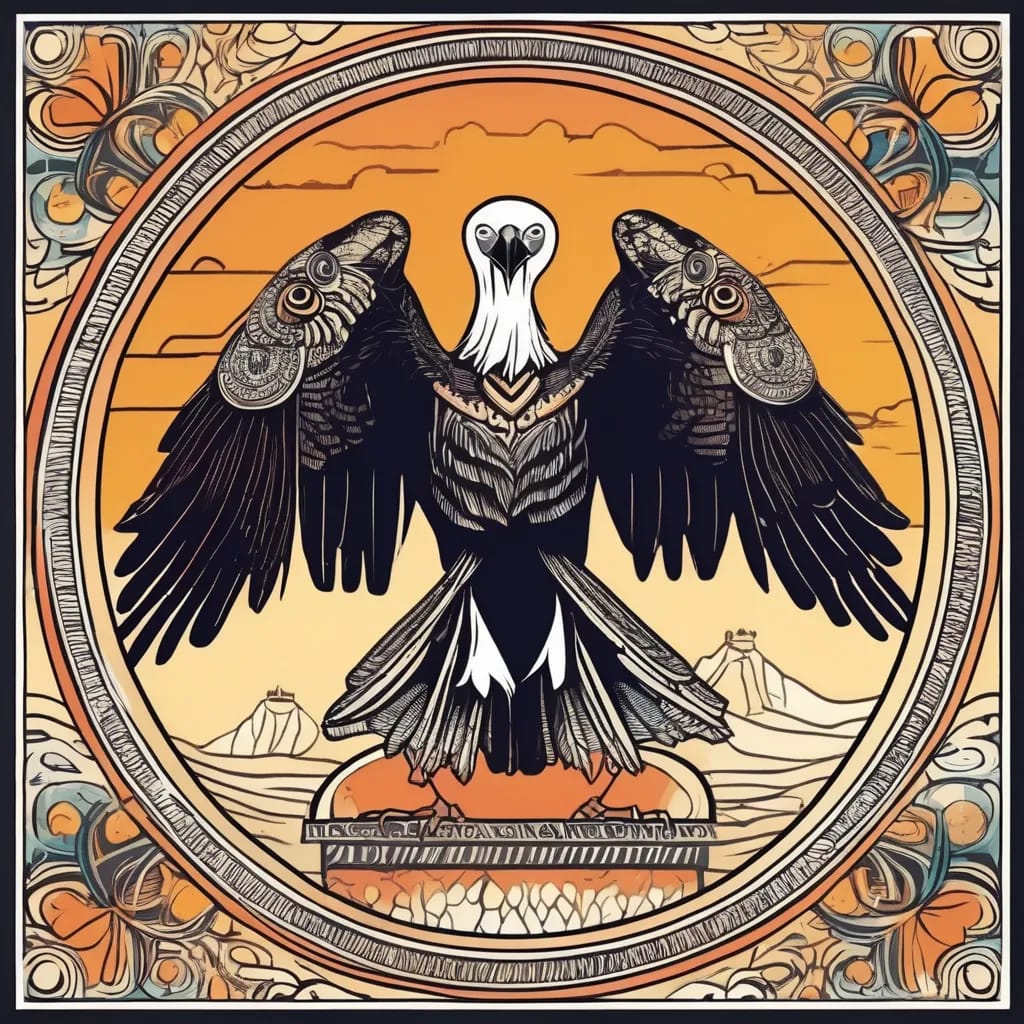
PC: Shaikh Shaheen
1. Vultures Only Circle When Something is Dying
The Misconception: whenever people see vultures soaring overhead, it is an indication that someone or something is dying.
The Reality: Vultures circle for several reasons, including riding thermal updrafts to conserve energy and searching for food. They are more likely to be observing the landscape or travelling between locations than waiting for something to die.
2.Vultures Are Dirty and Spread Disease
The Misconception: Vultures are often thought to be filthy birds that spread disease because they feed on carcasses.
The Reality: Vultures are actually highly adapted to their scavenger lifestyle and play a crucial role in preventing the spread of diseases. Their stomach acid is incredibly strong, allowing them to digest decaying meat and kill harmful bacteria like anthrax and cholera, which could otherwise spread to other animals or humans.
3. Vultures Are Evil or Ominous
The Misconception: Vultures are often associated with death, evil, or bad omens in various cultures, leading to fear and superstition.
The Reality: These beliefs are rooted in cultural symbolism rather than facts. Vultures are simply birds that have evolved to fill an important ecological niche. Far from being evil, they contribute to the environment by cleaning up dead animals and preventing the spread of diseases.
Vultures in Indian Mythology
Vultures have been associated with the Indian culture for a long time especially its symbolism and in mythological ancient epics, Ramayana is a classic ancient epic which depicted vultures in a significant way.
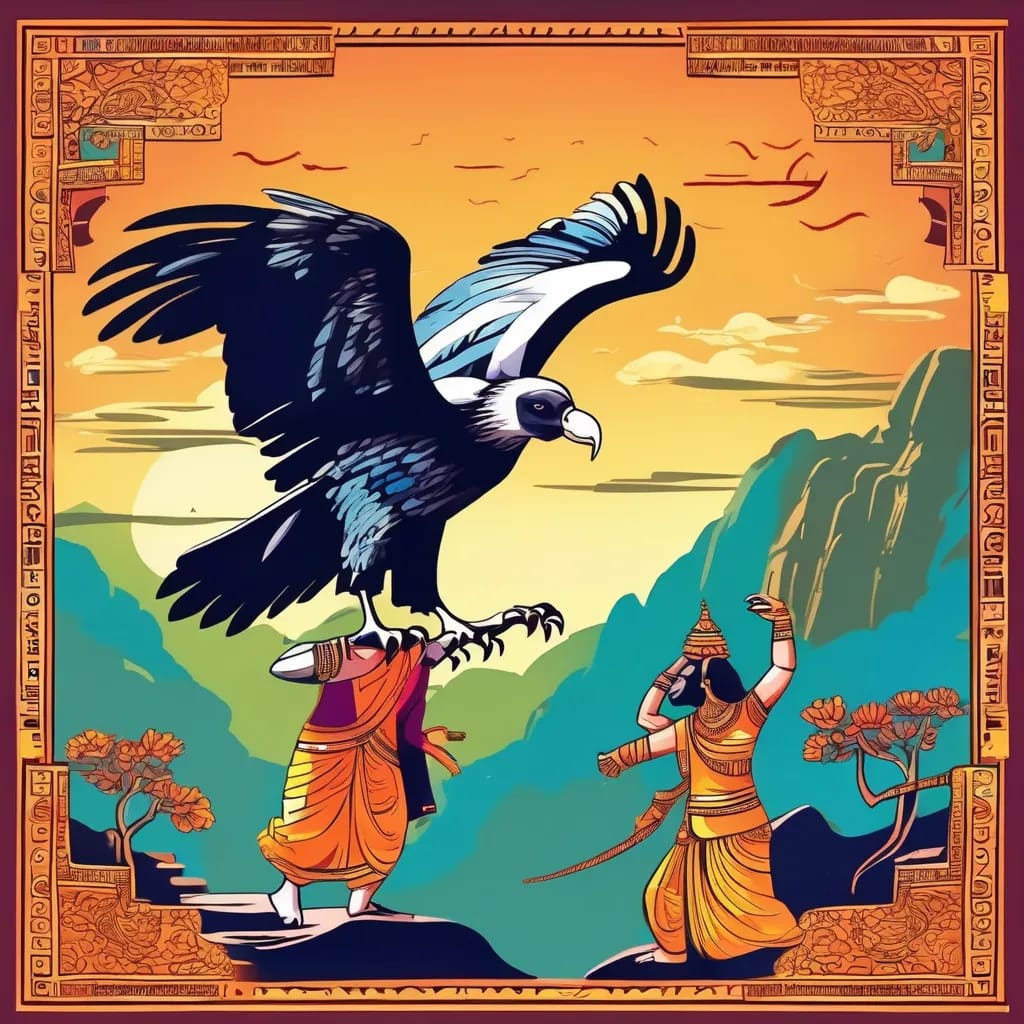
Jatayu: One of the most well-known vultures in Indian mythology, Jatayu is portrayed as a demi-god in the form of a vulture and plays a heroic role in the Ramayana. Jatayu bravely tried to save Sita when she was kidnapped by the demon king Ravana. Despite his advanced age, Jatayu bravely fought Ravana to protect Sita, but ultimately was overpowered and mortally wounded by Ravana. Jatayu’s sacrifice is commemorated as a symbol of devotion, bravery, and loyalty. Prior to his death, Jatayu told Lord Rama about Sita’s kidnapping, guiding him on the way to save her.
- Vultures are often associated with Guardianship and protection, Devotion and Sacrifice, Wisdom and age
- Vultures are commonly seen in visual representation in arts and cultures
- Cultural respect for vultures
- Vultures as a symbol of Dharma
Also Read: Birds Of Kanha National Park
References:
Markandya, A., Taylor, T., Longo, A., Murty, M. N., Murty, S., & Dhavala, K. (2008). Counting the cost of vulture decline—an appraisal of the human health and other benefits of vultures in India. Ecological economics, 67(2), 194-204.
Prakash, Vibhu, et al. “Recent changes in populations of Critically Endangered Gyps vultures in India.” Bird Conservation International 29.1 (2019): 55-70.
Kanaujia, Amita, and Sonika Kushwaha. “Vulnerable vultures of India: population, ecology and conservation.” Rare Animals of India, Bentham Science Publishers, UAE (2013): 113-144.
Van Dooren, Thom. “Vultures and their people in India: equity and entanglement in a time of extinctions.” Manoa 22.2 (2010): 130-145.
Wani, Hameem Mushtaq, et al. “Status of vultures in India: A review.” International Journal of Advanced Scientific Research and Management 3.12 (2018): 181-187.
CAMPBELL, Michael O., and J. H. A. Radhika. “Vultures, their population status and some ecological aspects in an Indian stronghold.” Notulae Scientia Biologicae 12.1 (2020): 124-142.
Written by Shaikh Shaheen, Naturalist with Pugdundee Safaris

